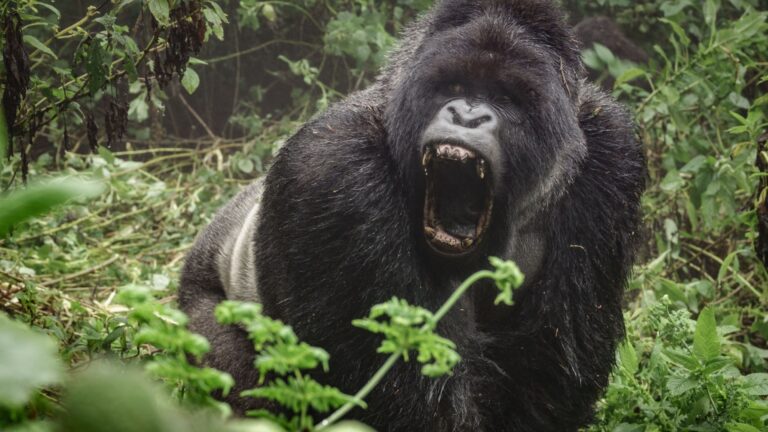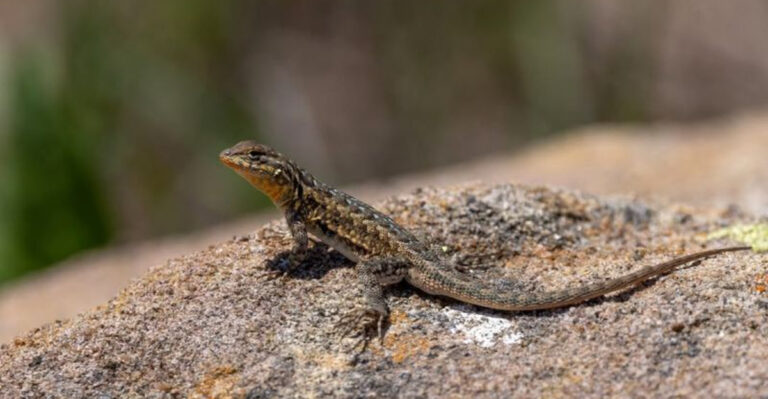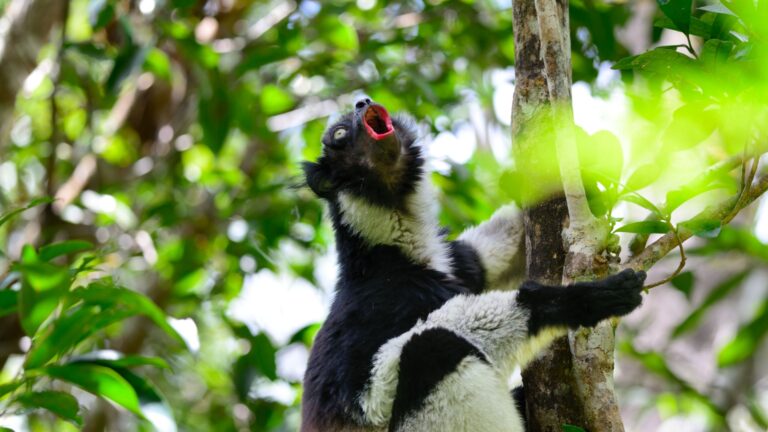10 Vibrant Orange-Headed Birds You Won’t Want To Miss
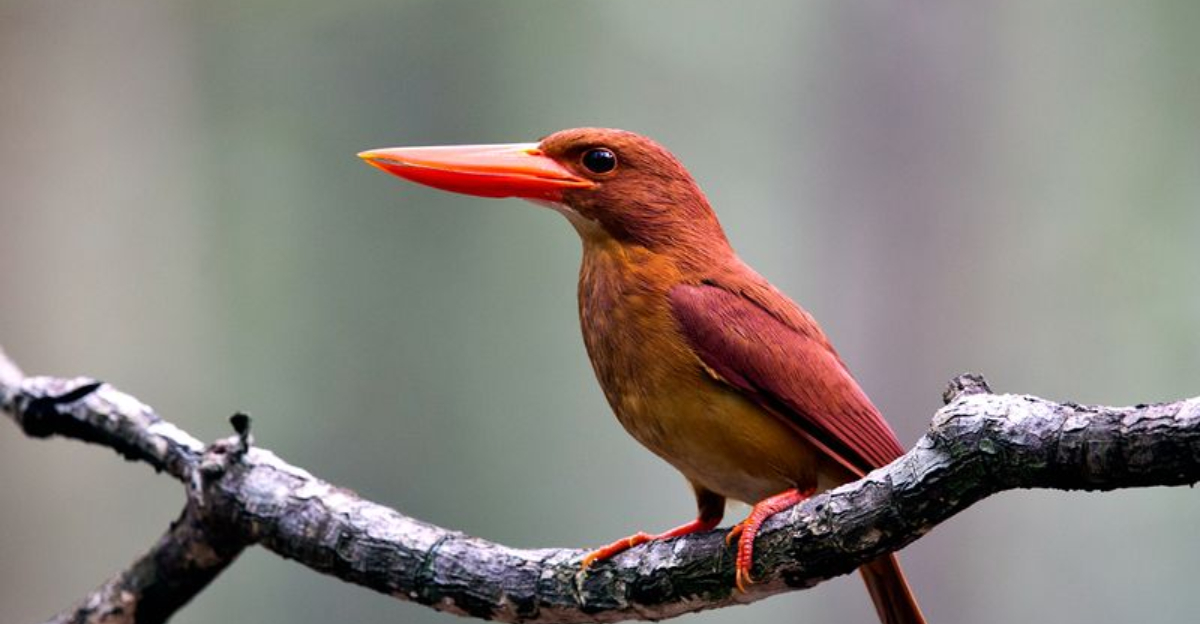
Nature is a canvas of vibrant colors, and few are as eye-catching as the stunning orange-headed birds.
These feathered wonders not only dazzle with their fiery hues but also showcase unique behaviors and thrive in diverse habitats.
In this list, we’ll dive into fascinating orange-headed birds that are sure to leave you in awe of their beauty and charm.
1. Orange-Headed Thrush
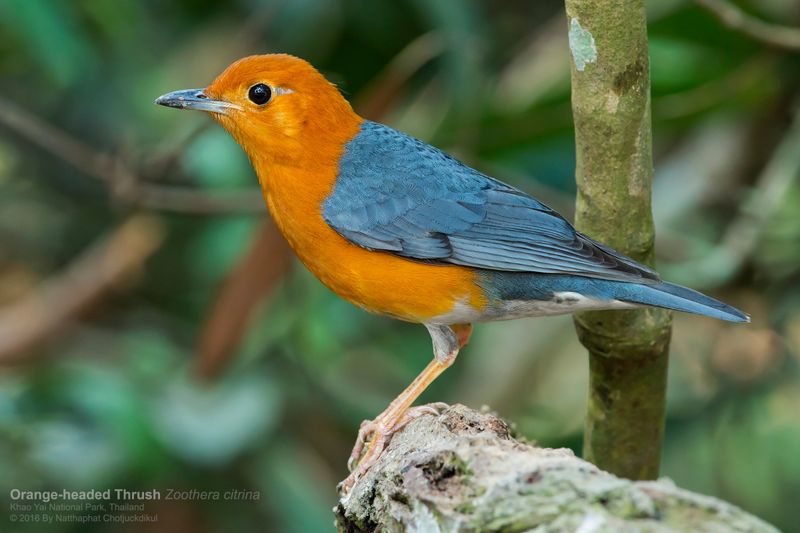
The Orange-headed Thrush, or Geokichla citrina, is a stunning bird native to the dense forests of South Asia.
With its bright orange head and underparts contrasting against a grey-blue back, this bird is hard to miss.
Often spotted foraging on the forest floor for insects, earthworms, and fallen fruit, its melodious, flute-like song fills the air, especially during the early morning and late afternoon.
These thrushes are elusive, so if you’re hoping to catch a glimpse, it’s best to explore quiet forest trails with patience and sharp eyes. Their beautiful song and striking appearance make them a must-see for birdwatchers in South Asia!
2. Ruddy Kingfisher
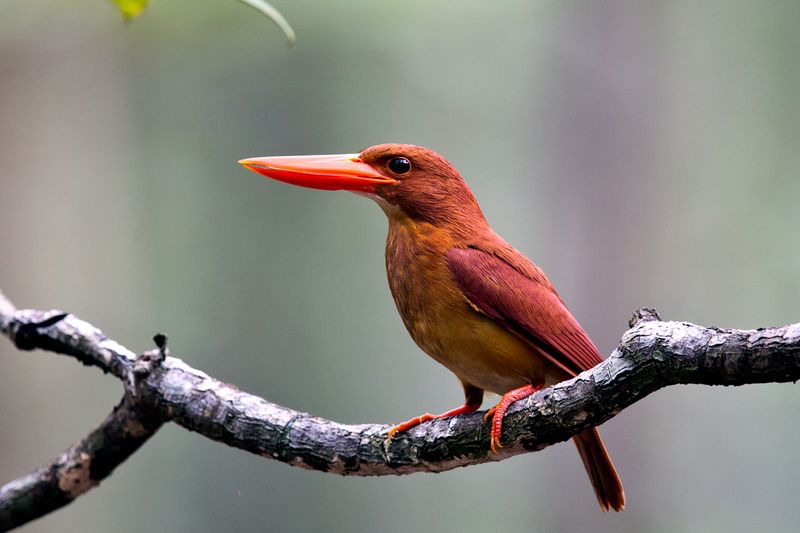
The Ruddy Kingfisher, or Halcyon coromanda, is a stunning bird found in Asia’s forests and mangroves.
With its rich orange head and body, and large, robust beak, it stands out among other kingfishers.
Preferring secluded spots near rivers or dense forests, this bird is a master of stealth, patiently hunting for insects, small fish, and crustaceans.
Unlike many of its relatives, the Ruddy Kingfisher is more often heard than seen, with its distinctive whistling call echoing through its habitat, especially during breeding season.
For birdwatchers, spotting one of these beauties is a rare and unforgettable experience, offering a fascinating glimpse into Asia’s avian world.
3. Blackburnian Warbler
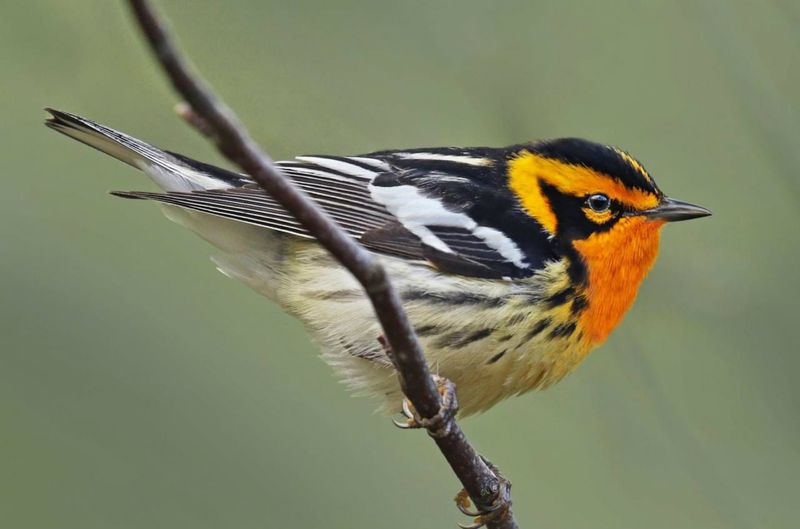
The Blackburnian Warbler, with its fiery orange throat and black-and-white streaked body, is a stunning sight in North America’s deciduous and mixed forests.
Known for its high-pitched song, this small warbler is usually found high in the treetops, making sightings a rare and exciting treat.
During migration, it travels thousands of miles to South America, demonstrating incredible endurance.
These warblers are among the first to arrive in the spring, signaling the season’s change. Birdwatchers flock to known hotspots to admire their vibrant plumage and enjoy their melodious songs, making them a must-see for any birding enthusiast!
4. Yellow-Billed Kingfisher
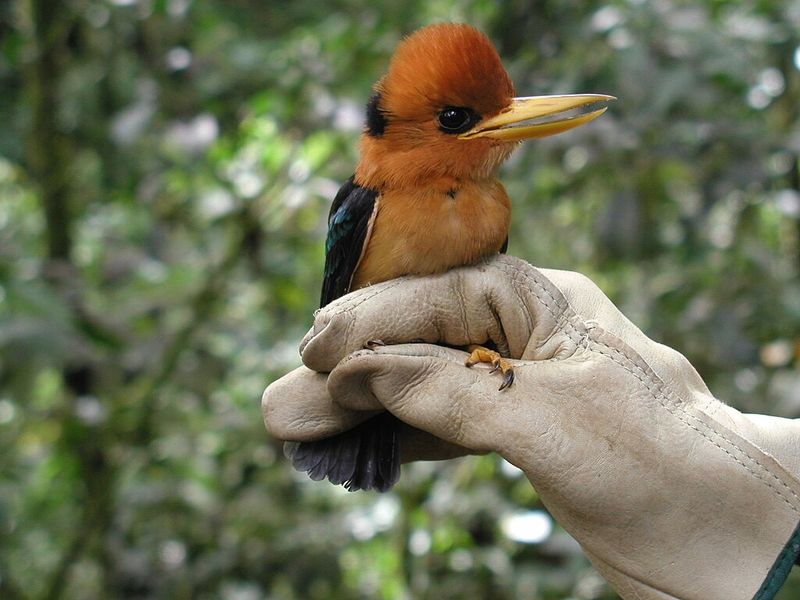
The Yellow-billed Kingfisher, or Syma torotoro, is a vibrant beauty you’ll find in the lush rainforests of New Guinea. With its striking orange head and bright yellow bill, it stands out against the dense greenery.
Unlike many other kingfishers, this one prefers to hop along the ground in search of insects and small vertebrates, making it a little different from its tree-dwelling cousins.
Its call, a series of high-pitched notes, echoes through the forest, especially at dawn and dusk.
5. Orange-Headed Tanager
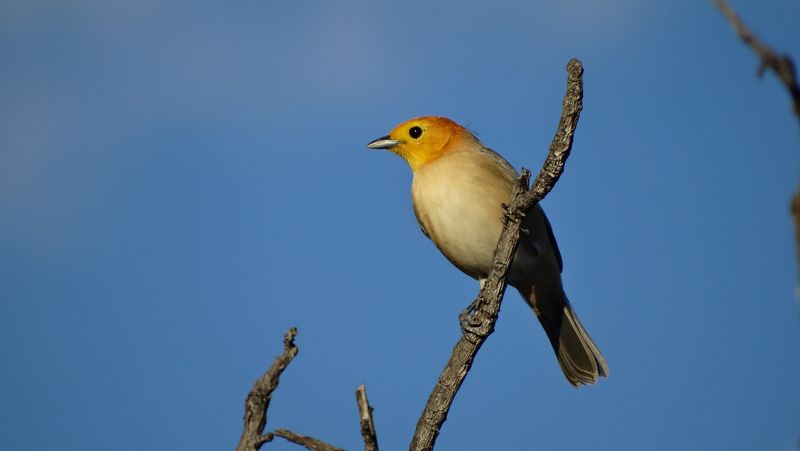
The Orange-headed Tanager is a true gem of South America’s rainforests, with its bright orange head and olive-green body standing out beautifully against the lush greenery.
These social little birds love to hang out in small flocks, foraging for fruits and insects, and they’re pretty adaptable, thriving in everything from dense forests to more open, secondary growth areas.
When it’s breeding season, the males show off their stunning colors while serenading their mates with sweet songs.
Birdwatchers visiting South America will find these tanagers an absolute treat to spot, especially near fruiting trees. With their vibrant hues and lively energy, the Orange-headed Tanager is sure to brighten any day in the wild!
6. Orange-Fronted Fruit Dove
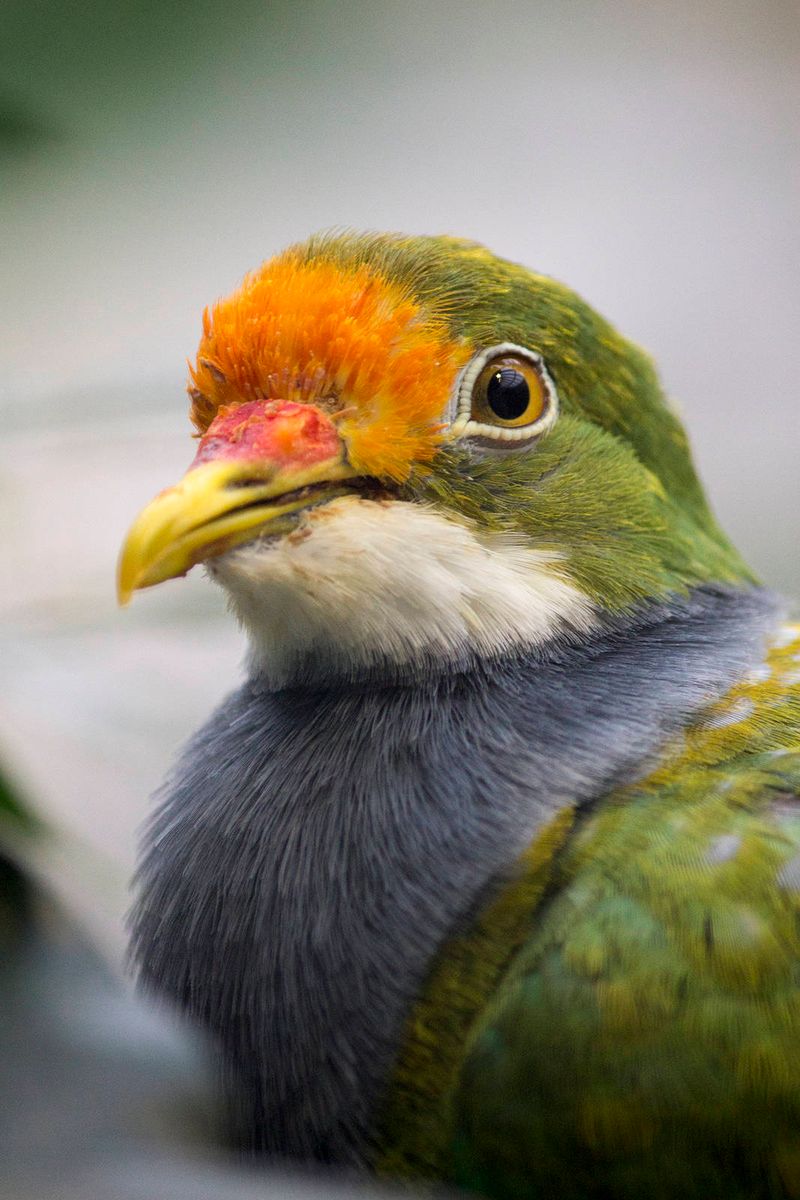
The Orange-fronted Fruit Dove is like a vibrant gem in the tropical forests, with its bright orange forehead and lush green body.
These doves are skilled fruit foragers, often spotted in the canopy as they quietly pick berries and small fruits.
Known for their shy nature, they’re more often heard than seen, with soft cooing calls filling the air.
As key players in seed dispersal, they help maintain the health of their ecosystem. For birdwatchers, spotting one of these colorful doves amid the dense foliage is a rewarding challenge, showcasing the beauty and diversity of tropical life.
7. Flame-Colored Tanager
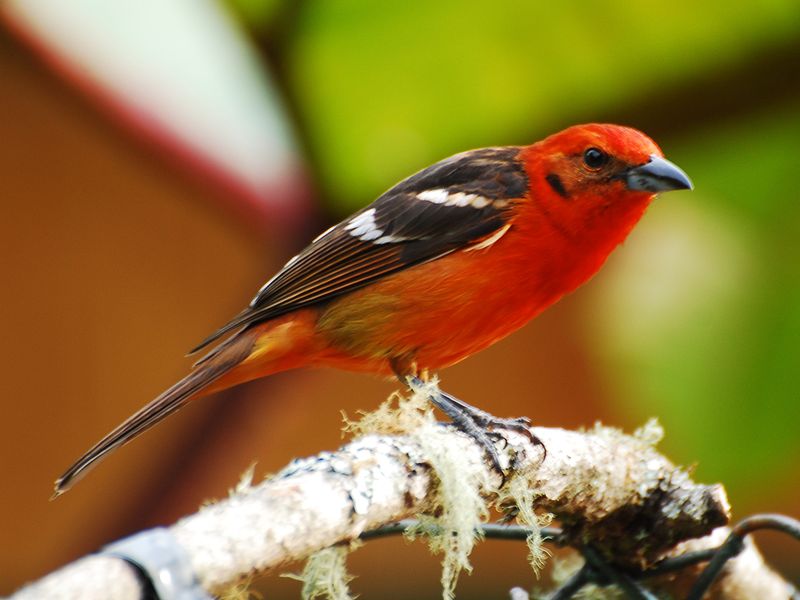
The Flame-colored Tanager, or Piranga bidentata, is a breathtaking bird native to the mountainous regions of Central America.
With its fiery orange head and breast, paired with black and white patterned wings, it’s a true gem of the forest canopy.
These social birds are often seen in pairs or small groups, foraging for insects and fruits in high-altitude pine-oak and cloud forests.
During breeding season, the male’s vibrant plumage and sweet, warbling song help attract a mate and establish territory.
Birdwatchers will love spotting these colorful birds along high-altitude trails, where their striking beauty and lively calls make them a favorite subject for photographers!
8. Rufous Hummingbird
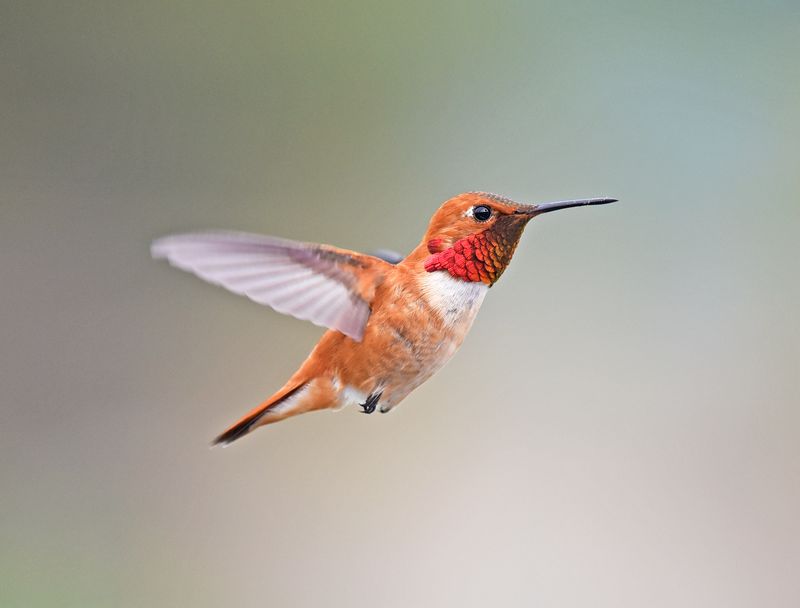
The Rufous Hummingbird, or *Selasphorus rufus*, is a small bird with a big personality, known for its fiery orange head and back.
Found across western North America, it’s one of the most captivating hummingbird species, especially with its impressive flying skills.
Despite being tiny, the Rufous Hummingbird embarks on a long migration, traveling thousands of miles between the Pacific Northwest and Mexico.
Bold and territorial, it’s often seen chasing away other hummingbirds to protect its feeding grounds.
To attract these colorful birds to your garden, plant tubular flowers and set up hummingbird feeders, offering a chance to witness their fascinating behaviors firsthand!
9. Western Tanager
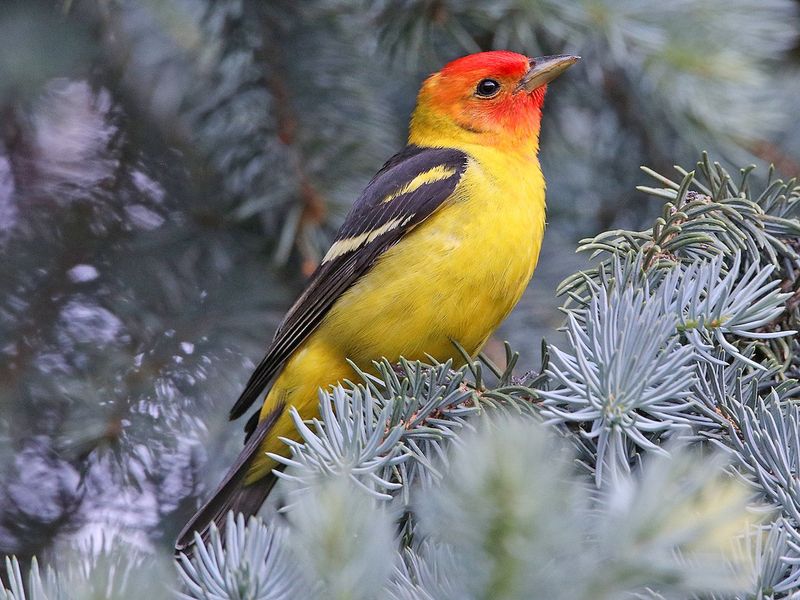
The Western Tanager, or *Piranga ludoviciana*, is a stunning bird with a bright orange-red head and yellow body that stands out in North America’s woodlands and forests.
These colorful birds are often spotted during migration, especially in mixed woods with conifers where they feast on insects and fruits.
Known for their melodious songs, Western Tanagers use short, sweet phrases to communicate and establish territory, with males using their dazzling orange heads to attract mates and ward off rivals.
Birdwatchers are in for a treat, as their vibrant plumage makes them easy to spot amidst the green foliage.
To attract them to your garden, try planting berry shrubs or setting up fruit-filled feeders, and enjoy their beauty and songs up close!
10. Streak-Backed Oriole
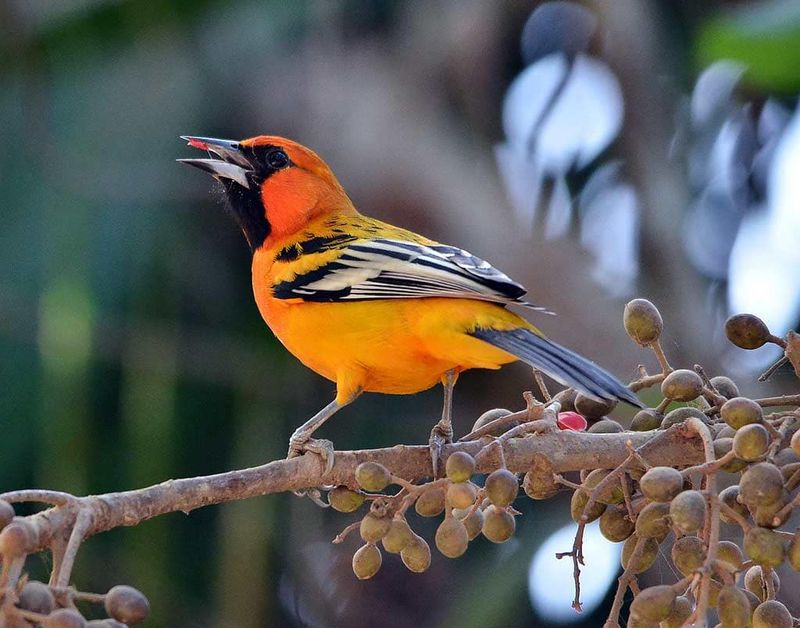
The Streak-backed Oriole, or Icterus pustulatus, is a stunning bird found in Central America and parts of the southwestern U.S.
With its bright orange head and neck contrasting against a black-streaked back, it stands out in any habitat.
These orioles thrive in open woodlands, gardens, and areas with scattered trees, where they build their iconic hanging nests.
Known for their versatile diet, they feed on nectar, fruits, insects, and even small lizards, making them adaptable to various environments.
For birdwatchers, attracting these beauties to your garden is easy with flowering shrubs, fruits like oranges and bananas, and oriole feeders, ensuring a delightful addition to your birdwatching experience!

